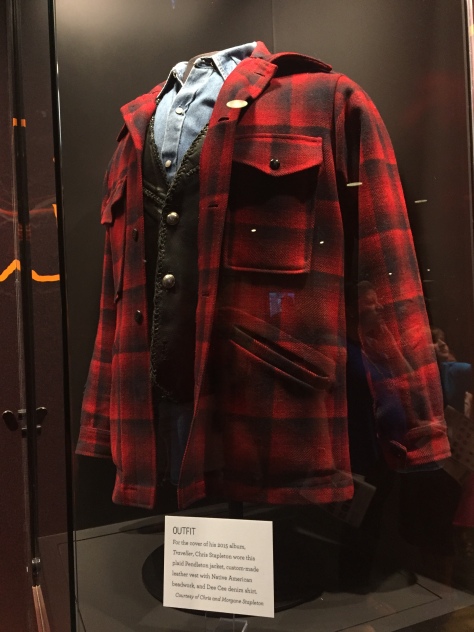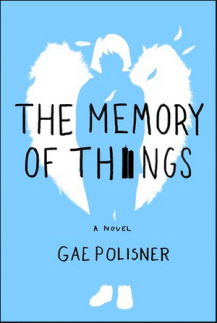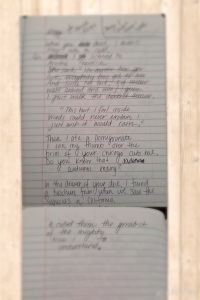I have been telling myself to write this blog post. But I haven’t. So a year in the making, here it is.
“Why are you planning a trip to Nebraska?,” most people asked. I thought planning a trip to Nebraska was the obvious choice for our second literary pilgrimage. Even people IN Nebraska were surprised to find that we did not fly to Omaha to visit relatives. To them I say: Go get you some Rainbow Rowell. Then we’ll chat.
This pilgrimage was quite different from our TFIOS one. Primarily because TFIOS was one book and in Nebraska I was juggling several. Shout out to Rainbow Rowell for tweeting me specific locations and answering any follow-ups I had.
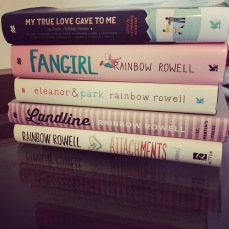
I knew before we arrived that quite a few locations mentioned in the books had closed. For example, the movie theaters mentioned in Attachments and the bowling alley are now defunct. While that was disappointing, there was still a lot to do.
Our Attachments landmarks included eating a piece of French silk pie at the Village Inn and visiting the Lithuanian Kafe. I had never had French silk pie before. Honestly, I had never even heard of it. But chocolate and whipped cream = what’s not to love? The Village Inn was not what I imagined. Something about it made me think it would have dark wood with window treatments in shades of wine. It was actually more like a Jersey diner. One thrilling twist in our night was that the diner’s garbage had actually caught fire. We essentially walked into an inferno for French silk pie. I have no regrets.
Eleanor & Park led us to some residential locations like North High School on Ames
Ellison / Sherman School. I was surprised at how neglected the neighborhood around Ellison still was post-1980s. It was rather a rather depressing sight to see people still living in what appeared to be abject poverty. One night we basically recreated their date in the Old Market by eating at Zio’s, hitting up Drastic Plastic and topping the night off with ice cream at Ted & Wally’s. We also spent some time at the Gene Leahy Mall (or Central Park in the book).

Eleanor’s street

Where Park plays basketball
Fangirl brought us to South 24th Street where we found Taco Trucks, South High School, and the International Bakery. We also took a drive about an hour away to Lincoln toward the University of Nebraska East Campus, Love Library, Andrew’s Hall, Valentino’s, Downtown Starbucks. Maybe if Fangirl was written before I went to college, I would’ve ended up in Lincoln. It seemed like a great college city.

Levi’s Starbucks
Although Landline takes place mostly in California, we do have some pivotal moments in Omaha. Namely, the airport and Rainwood Road.
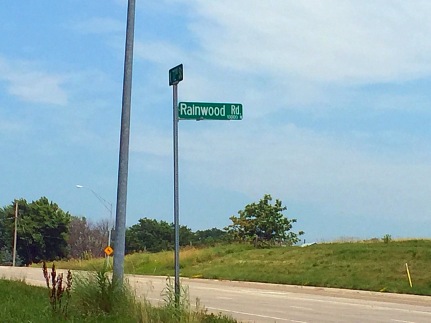
I am not sure if I will ever back it back to Nebraska so in addition to our Rainbow Rowell spots, we tried to see as much as our time would allow.
We visited Henry Doorly Zoo & Aquarium. It is under some serious construction and it sounds like it is going to be amazing when they are finished. We rode the Skyfari. Did I mention I am scared of heights? We walked down through the Heartland of America Park and saw the cool (and massive) fountain there. Our first day in Omaha it was raining so we visited the Joslyn Art Museum. One of my favorite stops was the Bob Kerrey Pedestrian Bridge, where you can ostensibly be in Nebraska and Iowa simultaneously. We hit up the Sunken Gardens, which were quite beautiful. What is a book pilgrimage without a trip to an indie bookshop? We popped in The Bookworm, where they instantly recognized my telephone shirt as a nod to Landline. We didn’t get to visit Carhenge because it was too far away (Just Google it). Maybe that means I’ll be back in Nebraska.

Skyfari

Heartland of America

Joslyn

Rowell in the wild!

the biggest flag I’ve ever seen

State House

QT with Honest Abe

fumble?

detour to the lake
I consider characters to be the most important element of stories for me. I would never think that setting would play a pivotal role for me as a reader. But here I am – going on pilgrimages so what do I know?
Nobody writes relationships like Rainbow Rowell. She will make you swoon and fill you with hope. Now go buy all of her books immediately.
Things I Learned about Nebraska:
- The food is delicious. My favorite meal might be the breakfast we had at a little trendy spot called Overeasy. I had vanilla pancake sticks stuffed with bacon. It was heaven.
- There is something happening in Omaha with balconies. They.are.everywhere. I consider it their signature architectural trait.
- Nobody does Independence Day like Nebraska. When our server at Over Easy found out that we were visiting, she asked what our plans were for the day. We mentioned that we wanted to see some fireworks and she told us her church had to best view and invited us over. She wasn’t lying. We sat on a steep hilltop and had a 360 degree view of fireworks. In New Jersey a fireworks display lasts for a few minutes. In Nebraska, it lasts for hours.
- You have not seen green until you’ve been to Nebraska. There is a rich, deep green. It needs its own name.

We’re not in Jersey anymore

Sommer! One of the coolest people we met

Peace out, Omaha!
PS: You can check out our on-site readings on Youtube. https://www.youtube.com/watch?v=1BG9LICRDc0
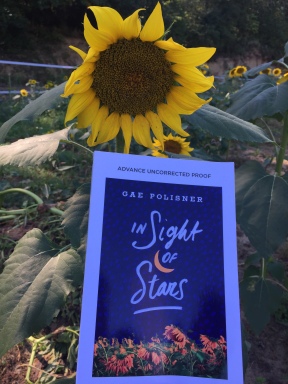 After tackling the aftermath of September 11th in her novel The Memory of Things, Gae Polisner brings us her latest book, In Sight of Stars, which follows high school senior, Klee (Clay) Alden. Klee is reeling from his father’s suicide the year before and we meet him in an opening scene of self-harm. Klee can’t forgive himself for not doing more to save his father and he blames his mother even more. He seeks solace in a young woman named Sarah, but he will learn that healing rooted in someone else is only a temporary salve.
After tackling the aftermath of September 11th in her novel The Memory of Things, Gae Polisner brings us her latest book, In Sight of Stars, which follows high school senior, Klee (Clay) Alden. Klee is reeling from his father’s suicide the year before and we meet him in an opening scene of self-harm. Klee can’t forgive himself for not doing more to save his father and he blames his mother even more. He seeks solace in a young woman named Sarah, but he will learn that healing rooted in someone else is only a temporary salve.














